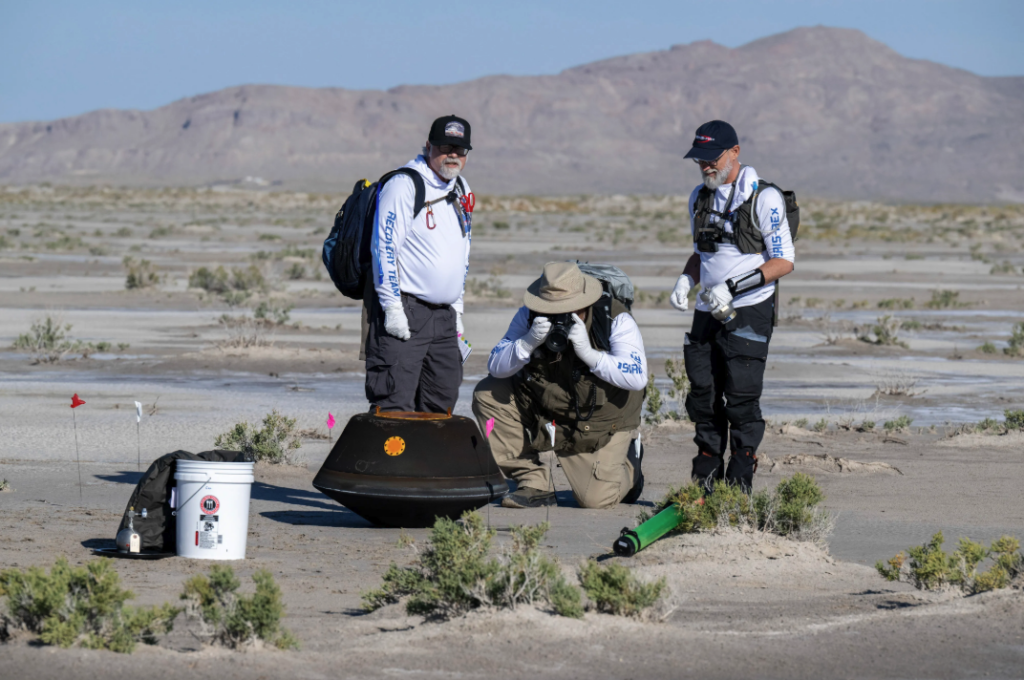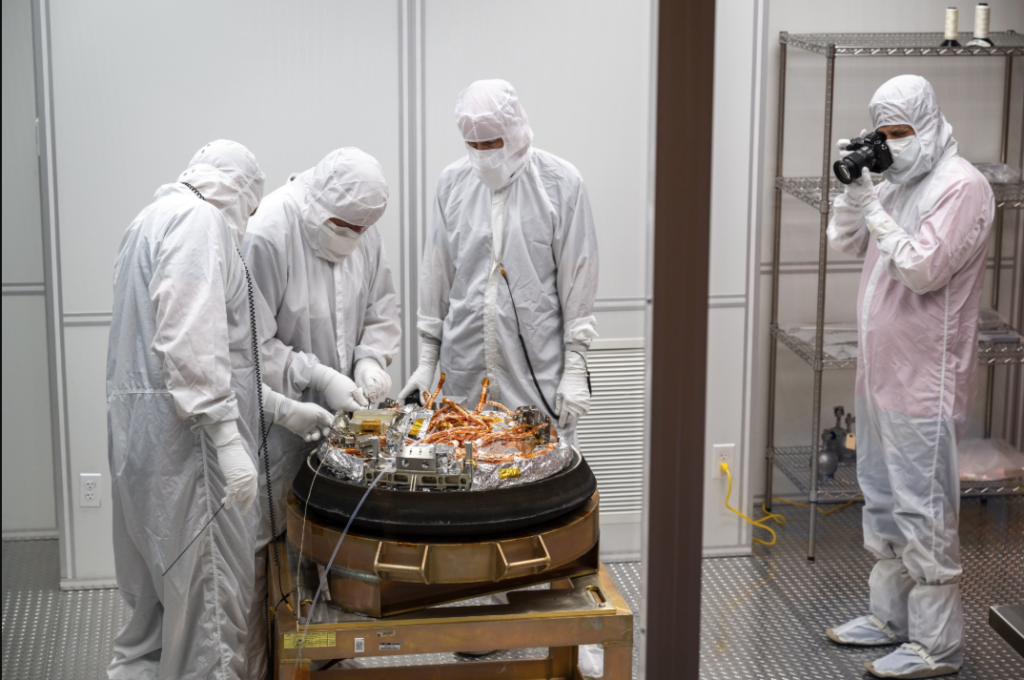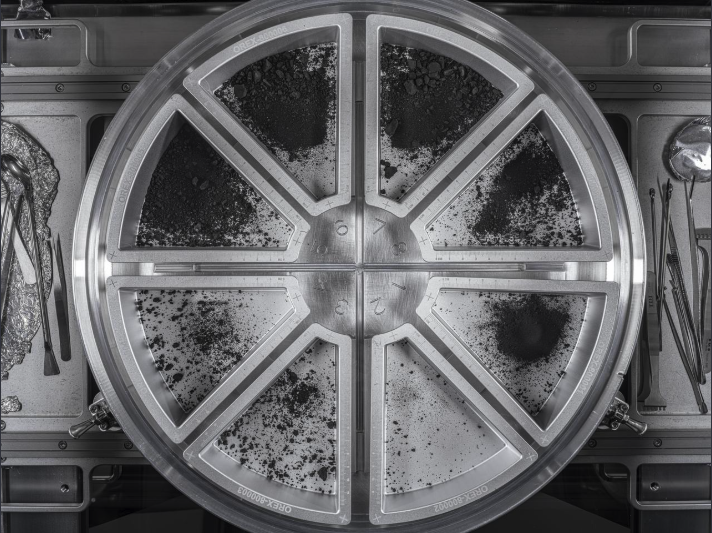“The Stuff of Other Worlds”: Extraterrestrial Materials Give Us Clues About Life on Earth
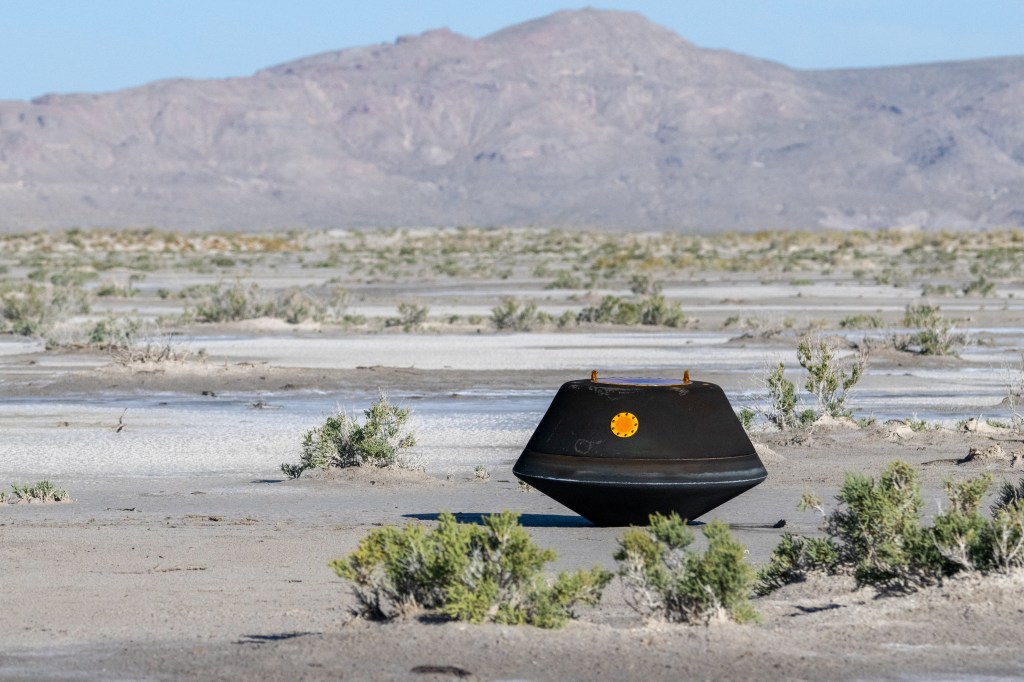
Dr. Eileen Stansbery, division chief for astromaterials research and exploration science at NASA’s Johnson Space Center, to speak at NC Space Grant’s annual Symposium on April 11, 2025.
When Ed White took the first American spacewalk during the Gemini IV mission in 1965, Eileen Stansbery remembers thinking, “can I be a part of the Space Program?” Today, she’s the division chief of astromaterials research and exploration science at the Johnson Space Center in Houston, Texas and in charge of the extraterrestrial materials we bring back to Earth.
Capturing and studying the “stuff of other worlds” will be the focus of Stansbery’s talk at the NC Space Grant’s annual symposium luncheon on April 11, 2025. She will discuss the recent OSIRIS-REx mission to gather samples from the Bennu asteroid and consider the “big questions” that this kind of science asks.
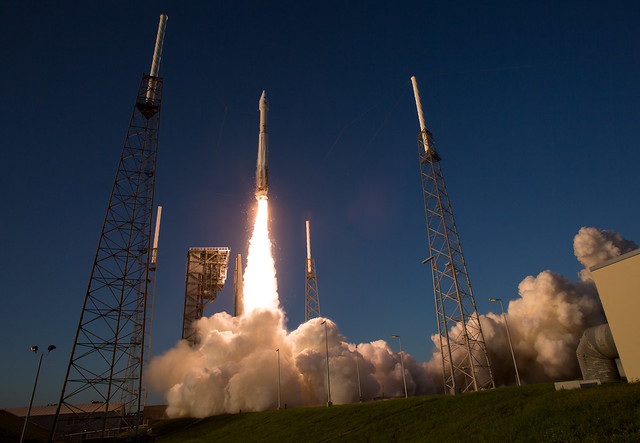
Stansbery is often asked: why should we keep funding missions like OSIRIS-Rex?
There is an easy answer. As we explore beyond Earth, we learn so much about the humans who live here. For example, living in “microgravity and returning to gravity has made a huge impact on our understanding of osteoporosis,” said Stansbery. We’ve also learned a great deal about “how human tissue grows” and “these are specific benefits for human welfare.” Scientists have also gained new knowledge about how materials are “weathered” differently in space. Rather than more familiar weathering by wind and water on Earth, in space friction can be caused by small objects (micrometeoroid bombardment).
The more interesting answer to the funding question is that collecting extraterrestrial materials is about “basic, fundamental questions,” said Stansbery. “What is life?” “How do you determine when and how life happens?”
In early 2025, initial findings from the samples were published in Nature and Nature Astronomy. Both teams of researchers were looking for answers to some of these big questions. In the Nature article, the searched for clues about the environments in which the parent body of asteroid was formed. Could this environment also “kick start” life? They found 11 minerals that are part of an evaporation process – salts dissolved in water and now existing in an evaporated form. In Nature Astronomy, researchers found organic compounds, 14 of the 20 proteins that make up life on Earth. These kinds of clues are only available in asteroid samples that are spared the contamination or destruction faced by objects that pass directly through the Earth’s atmosphere. The capsule sent to Earth protected the samples and allowed NASA scientists access to materials as they exist in space. Both papers offer more clues about how life starts. What are the necessary ingredients? What are the conditions?
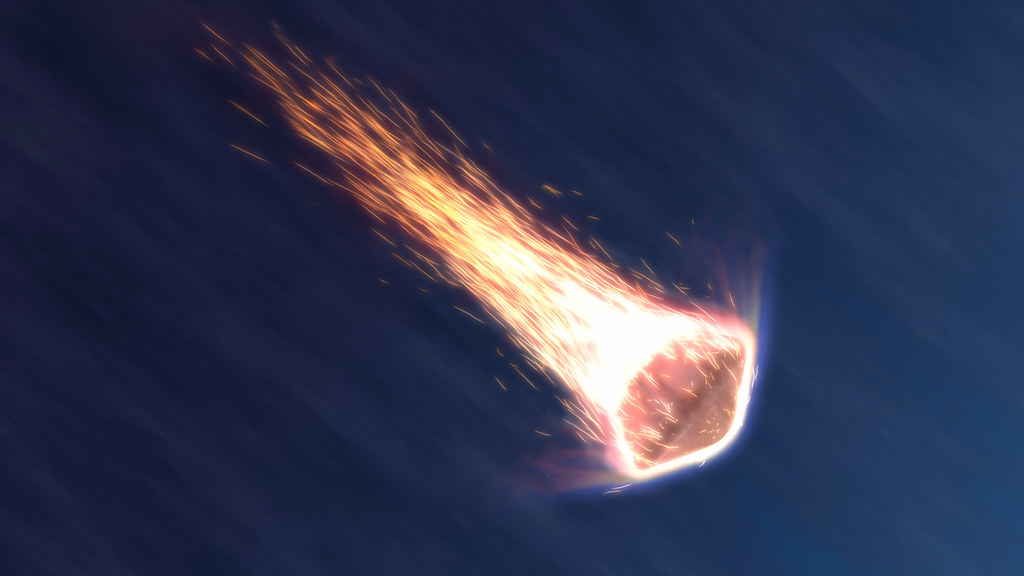
While cost is always a consideration for a NASA scientist, doing this kind of science can’t always be measured in monetary terms.
Stansbery and science fiction writer Alexis Glynn Latner wrote in “Stuff of Other Worlds,” “Prometheus brought fire back from the gods to human kind, a myth for the foundation of technology. Our space-faring robots will bring back the Moon and Mars, the Sun, asteroids and comets. The result will be scientific insight into the evolution of the solar system, and with that we will better understand the fabric of the universe.”
Investing in the future is built into all extraterrestrial material missions. A portion of the retrieved material is set aside. “We are not only waiting for new technology to exist” that might examine the material in ways we cannot, said Stansbery. “The questions will change too.” This is the heart of the scientific enterprise. As we learn new things, our questions about them shift. Sometimes, the work of NASA is about dreams. Missions like OSIRIS-REx are an “investment in the future and the young. They are about the development of the nation to think and dream about things we cannot yet do,” said Stansbery.
Stansbery has had her own share of dreaming. While she is currently a chief scientist at NASA, Stansbery was, briefly, a college dropout. She grew up in central Texas and went to college when most women did not. “The choices were housewife, teacher, secretary, nurse or a nun,” said Stansbery. For a first-generation college student, making the ends meet was hard. She took a job where she ended up doing computer science work and even some software verification. She couldn’t do the job and college, so she dropped out.
Luckily, for NASA, Stansbery had a boss that was also a mentor. “I can’t have you doing the work you are doing without a college degree,” her boss said. “I’m firing you. Someday you’ll thank me for this, and you’ll realize this is a favor.”
It took Stansbery a long time to see it as a favor, but she does now. Many students, like Stansbery, just need a mentor to push them in the right direction. Stansbery’s mentor helped her get set up at a small college where she was able to finish.
Studying science and engineering is hard. It is also competitive. “You don’t have to be the smartest person in the room to do this work,” said Stansbery. “In fact, I’ve never been the smartest person in the room. But you do have to be willing to work hard. Just because something is hard at first doesn’t mean you won’t be good at it.”
Stansbery is definitely good at her work.
The NC Space Grant Symposium offers a great place for students to practice being good at their work.
In addition to Eileen Stansbery’s talk, participants can enjoy a morning plenary by Kimberly Bush, Chief of Staff at NASA Langley Research Center. Bush will discuss the importance of mentoring in STEM fields.
A focus on mentoring will continue later in the day with discussions by Rafale Loureiro, Associate Professor of Botany and Plant Biology at Winston-Salem State University, A’nya Bucker, NC Space Grant Undergraduate Research Scholar (2024-2025) and STEM Bridge Scholar (2023-2024) – Winston-Salem State University, and Sarah Lang, NC Space Grant Undergraduate Research Scholar (2023-2024) an STEM Bridge Scholar (2022-2023) – Winston-Salem State University.
The symposium is on April 11 at the McKimmon Center on NC State campus in Raleigh. Information on registration and the agenda can be found here.
Enjoy images from the OSIRIS-REx mission below:
__________________________________________________________________
The OSIRIS-REx landing
(NASA) On October 20, 2020, OSIRIS-REx mission dramatically landed on the near-Earth asteroid Bennu and collected a sample.
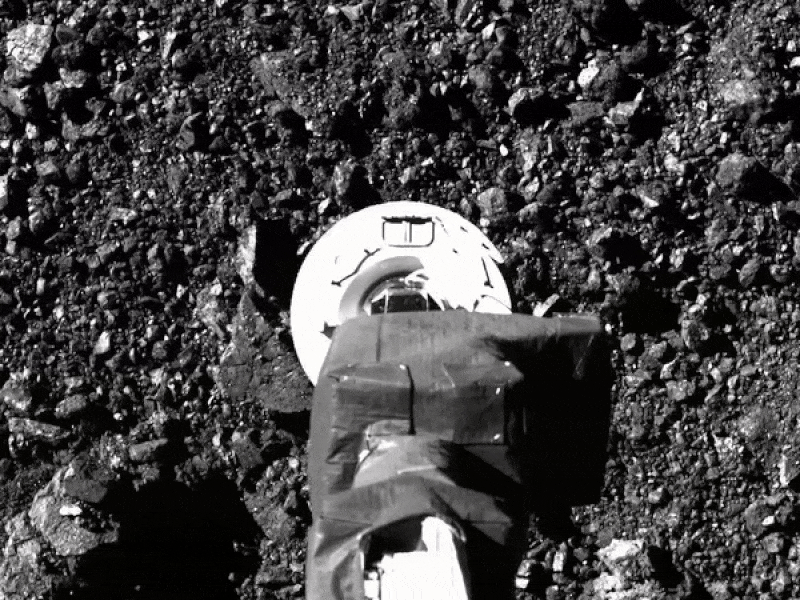
Gallery of Sample Recovery
On September 24, 2023, OSIRIS-REx, returned to Earth, dropped the sample and headed back to space on a new mission, OSIRIS-APEX, to explore the asteroid Apophis. Here on Earth, Stansbery and her team were ready to receive the rock and dust collected from Bennu.

